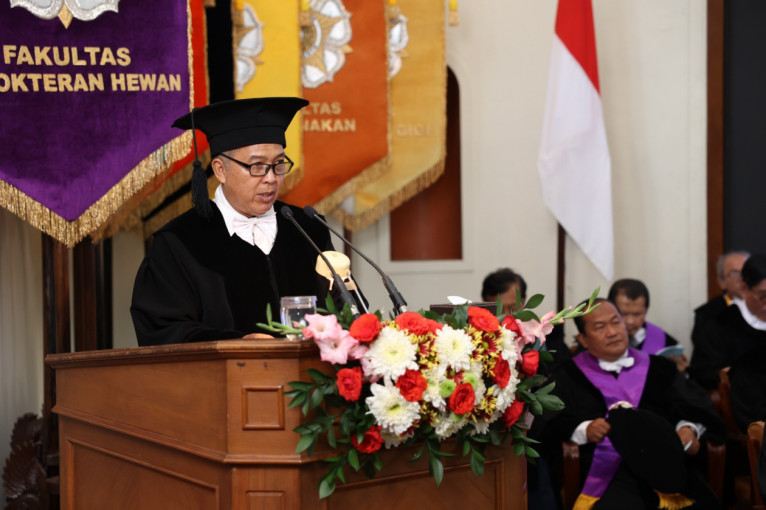
Dr. Soedarmanto Indarjulianto has been officially inaugurated as a professor of veterinary clinical science at the UGM Faculty of Veterinary Medicine.
The ceremonial inauguration, held at the UGM Senate Hall on Thursday (Nov. 30), marked a significant juncture for Professor Indarjulianto as he delved into the pivotal subject of advancing infectious disease diagnosis in cats, particularly within the ambit of internal medicine in veterinary medicine.
His scholarly discourse centered on feline panleukopenia (FPL), an infectious ailment stemming from the feline panleukopenia virus, distinguished by its high morbidity and mortality rates.
Professor Indarjulianto underscored the imperative need for a simple, expeditious, and accurate diagnosis in fortifying the prognosis and treatment of cats grappling with this formidable disease.
“Among the myriad infectious diseases that persist year-round, casting an ever-present challenge in the veterinary landscape of Indonesia, FPL stands out,” he said.
“Effectively treating this disease is intricately tied to the precision and accuracy of its diagnosis. This presentation delves into the evolution of FPL diagnosis.”
Embarking on a presentation titled “Development and Application of Veterinary Clinical Diagnosis Methods in Feline Panleukopenia,” Professor Indarjulianto expressed gratitude for the escalating awareness among pet and livestock owners in Indonesia regarding the health of their animals.
With a burgeoning proclivity to seek veterinary care when their animals, particularly pets, fall ill, veterinarians’ responsibility to provide an accurate diagnosis becomes paramount. This underscores the profound significance of the veterinary clinical diagnosis field.
“Veterinary clinical diagnosis (VCD) represents the confluence of science and art in discerning the health status of animals. In animal health, especially within veterinary clinics, VCD is instrumental as it forms the bedrock for diagnosis, prognosis, therapy, and disease control,” he expounded.
FPL cases manifest various clinical symptoms contingent on factors such as age, immune status, infection levels, and secondary infections.
Professor Indarjulianto delineated the diverse clinical presentations of FPL, ranging from early signs like fever, lethargy, anorexia, leukopenia, and dehydration to severe symptoms including severe leukopenia, vomiting, diarrhea, depression, and, in certain instances, sudden death.
“The clinical manifestations in adult cats typically include fever, lethargy, weakness, and appetite loss, evolving into severe dehydration. Vomiting, occasionally accompanied by watery to hemorrhagic diarrhea and substantial weight loss, may also be observed,” he added.
“However, some cats may solely exhibit signs of anorexia and lethargy without the manifestation of diarrhea, vomiting, or leukopenia.”
While clinical symptoms are identifiable with basic tools and entail minimal costs, the precision of FPL diagnosis based solely on clinical manifestations remains modest, necessitating validation through laboratory methods.
Professor Indarjulianto emphasized that comprehensive disease diagnosis in animal patients, including FPL, hinges on meticulous early-stage physical examinations complemented by varied laboratory investigations.
He iterated the indispensability of VCD, underscoring its continued relevance in conjunction with technological advancements, including artificial intelligence and machine learning.
Author: Agung Nugroho
Photographer: Firsto

